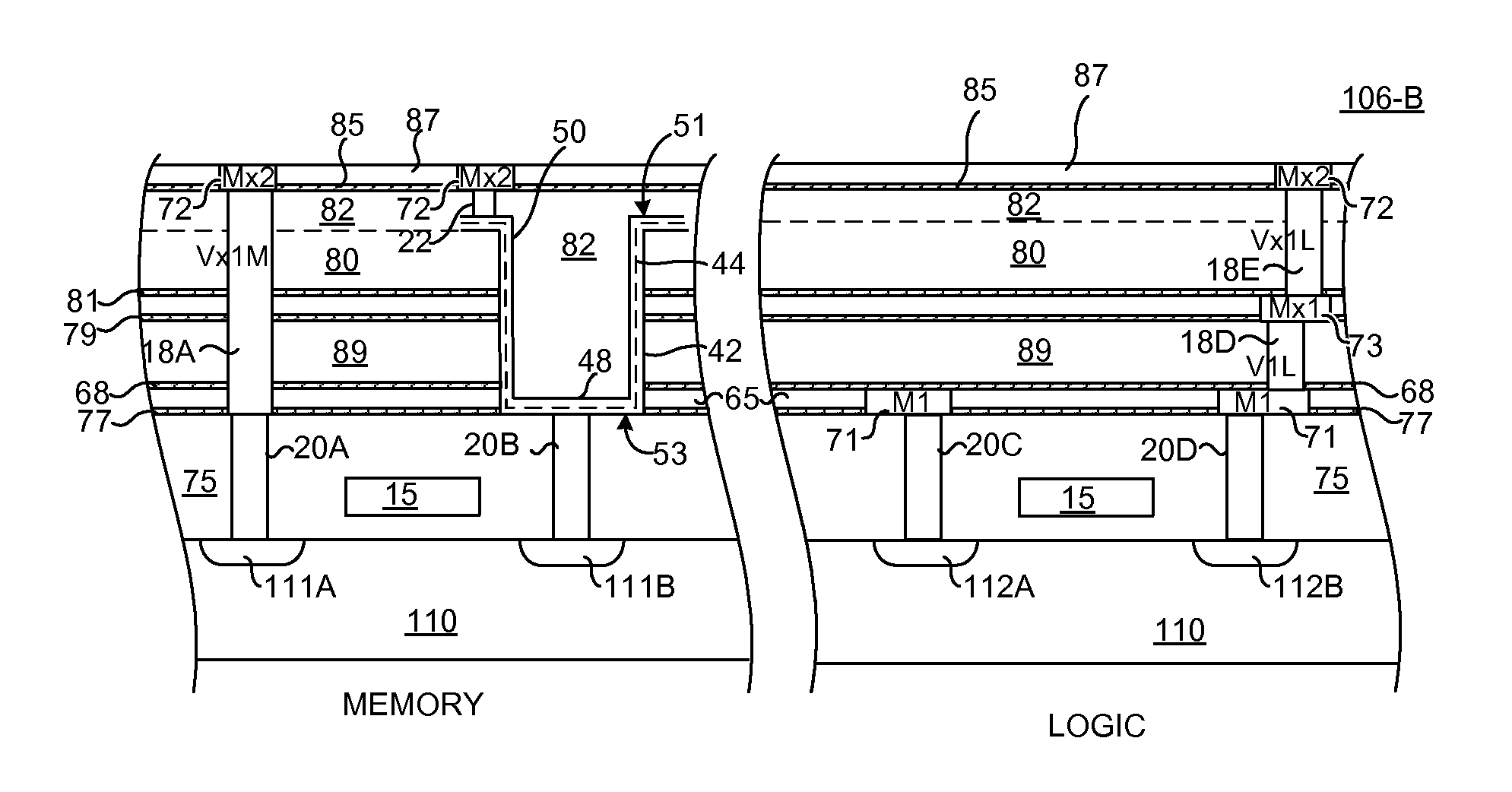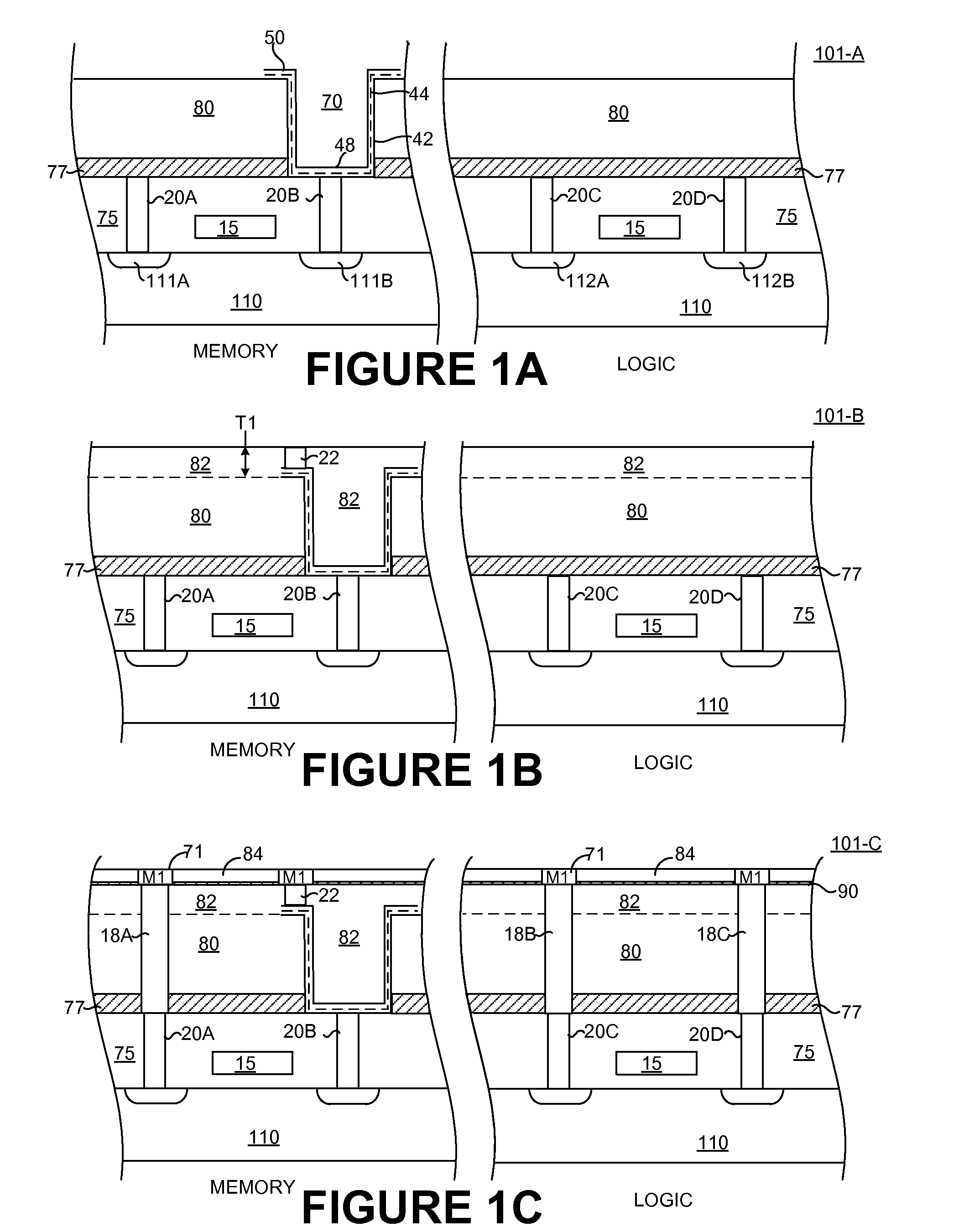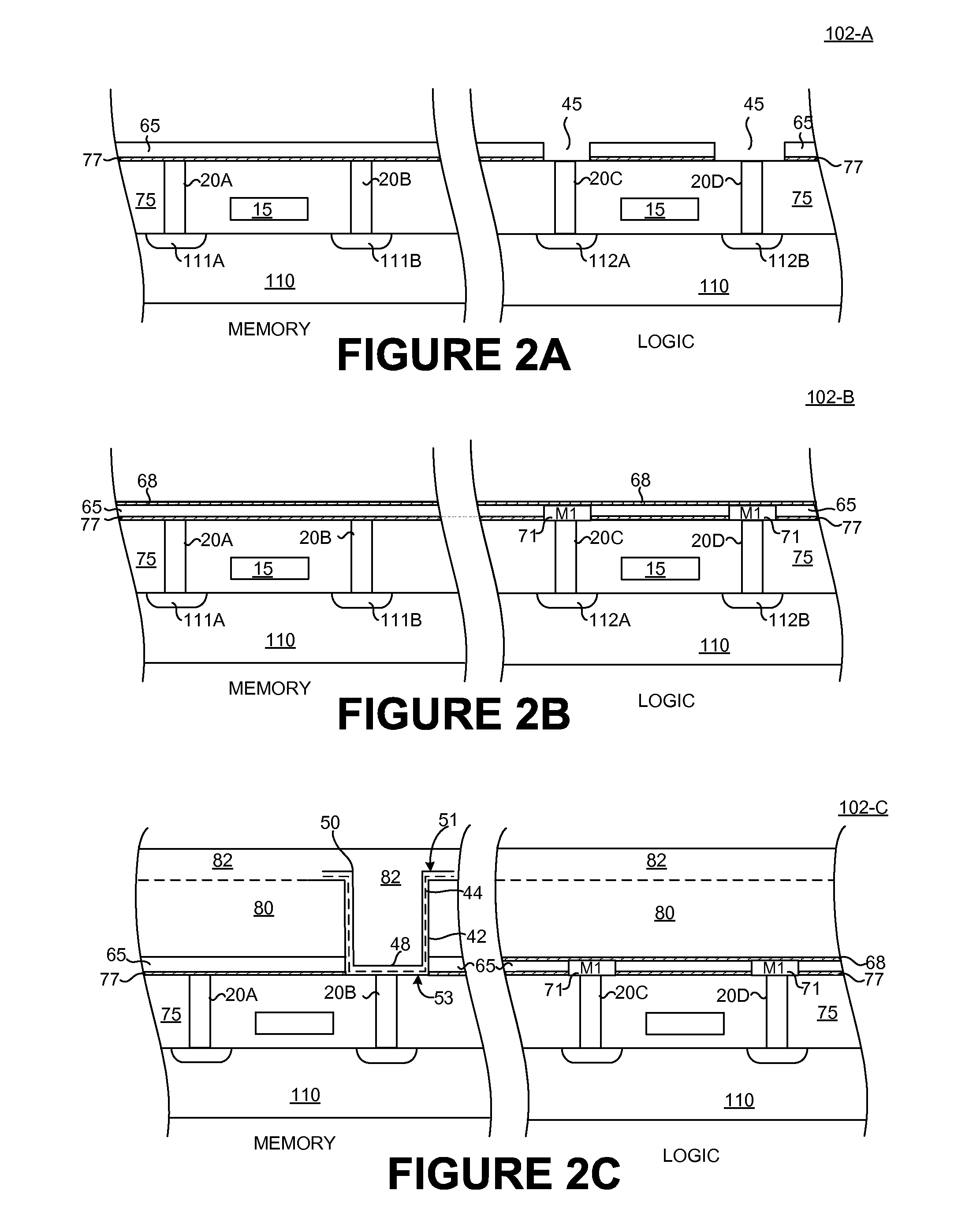System with logic and embedded MIM capacitor
a technology of logic and capacitors, applied in capacitors, digital storage, instruments, etc., can solve the problems of unintentional parasitic capacitance behavior of logic circuits controlling edrams, affecting signal levels, signal speed, signal integrity, etc., to reduce parasitic capacitance, reduce parasitic capacitance, and reduce the effect of source (s) and drain
- Summary
- Abstract
- Description
- Claims
- Application Information
AI Technical Summary
Benefits of technology
Problems solved by technology
Method used
Image
Examples
fourth embodiment
[0038]Referring now to FIG. 4, a cross-sectional view of one portion of a process flow for forming a semiconductor structure 104 having an embedded DRAM system with a first metal layer in the memory region located at a layer corresponding to a location between a top and bottom surface of a MIM capacitor is shown, in accordance with the present disclosure. Semiconductor structure 104 corresponds directly to FIG. 2C with the addition of a metal layer, M1 interconnect 71, located in memory region between a top surface 51 and a bottom surface 53 of MIM capacitor 50, and coupled to drain 111A through contact 20A. Note that a via, similar to 18A of FIG. 3D, is not used in memory section of FIG. 4, because M171 over contact 20A completes the routing for a bit line. Subsequent processing operations for vias and plugs with corresponding conditions is per FIGS. 2D, 3C and 3D, or 5B-5C.
[0039]While using metal layer M1 interconnect 71 in memory region may reduce parasitic capacitance in the mem...
fifth embodiment
[0040]Referring now to FIGS. 5A-5C, cross-sectional views of a process flow for forming an embedded DRAM system having a MIM capacitor by different sequencing of via formation is shown, in accordance with the present disclosure. Partially completed semiconductor structure 105-A of FIG. 5A is fabricated according to the process described for FIGS. 2A-2C, including the conventional process to form M1 first metal layer 71. While etch-stop layer 68 and dielectric layer 65 are capable of being removed prior to forming dielectric layer 80 for a simplified etching of via 18A, the illustration retains etch-stop layer 68 and dielectric layer 65 in the memory region, except as required for the formation of MIM capacitor 50. To form the MIM capacitor 50, dielectric layers 80 and 65 and etch-stop layers 68 and 77 are etched and MIM capacitor is formed therein as described in FIG. 2C. After completion of the MIM capacitor 50, second dielectric layer 82 is then formed as described in FIG. 2C. In ...
sixth embodiment
[0042]Referring now to FIGS. 6A-6B, a cross-sectional view of a process flow for forming an embedded DRAM system having multiple metal layers in the logic region located between a top and bottom surface of a MIM capacitor, in accordance with the present disclosure. Partially completed semiconductor structure 106-A of FIG. 6A is fabricated according to the process described for FIGS. 2A-2B, including the conventional processing to form M1 first metal layer 71 in dielectric layer 65, over which is formed second etch-stop layer 68, over which is next disposed first dielectric layer 89. Then, over dielectric layer 89 is disposed etch-stop layer 79, which is then processed to dispose dielectric layer 83 thereon. Dielectric layer 83 is etched to form a groove (not shown) for metallization region Mx1 interconnects 73. A mask (not shown) is placed on dielectric layer 83 and patterned to form intermediate V1L via 18D, which is then filled with a conductive material, such as tungsten. Metalli...
PUM
 Login to View More
Login to View More Abstract
Description
Claims
Application Information
 Login to View More
Login to View More - R&D
- Intellectual Property
- Life Sciences
- Materials
- Tech Scout
- Unparalleled Data Quality
- Higher Quality Content
- 60% Fewer Hallucinations
Browse by: Latest US Patents, China's latest patents, Technical Efficacy Thesaurus, Application Domain, Technology Topic, Popular Technical Reports.
© 2025 PatSnap. All rights reserved.Legal|Privacy policy|Modern Slavery Act Transparency Statement|Sitemap|About US| Contact US: help@patsnap.com



